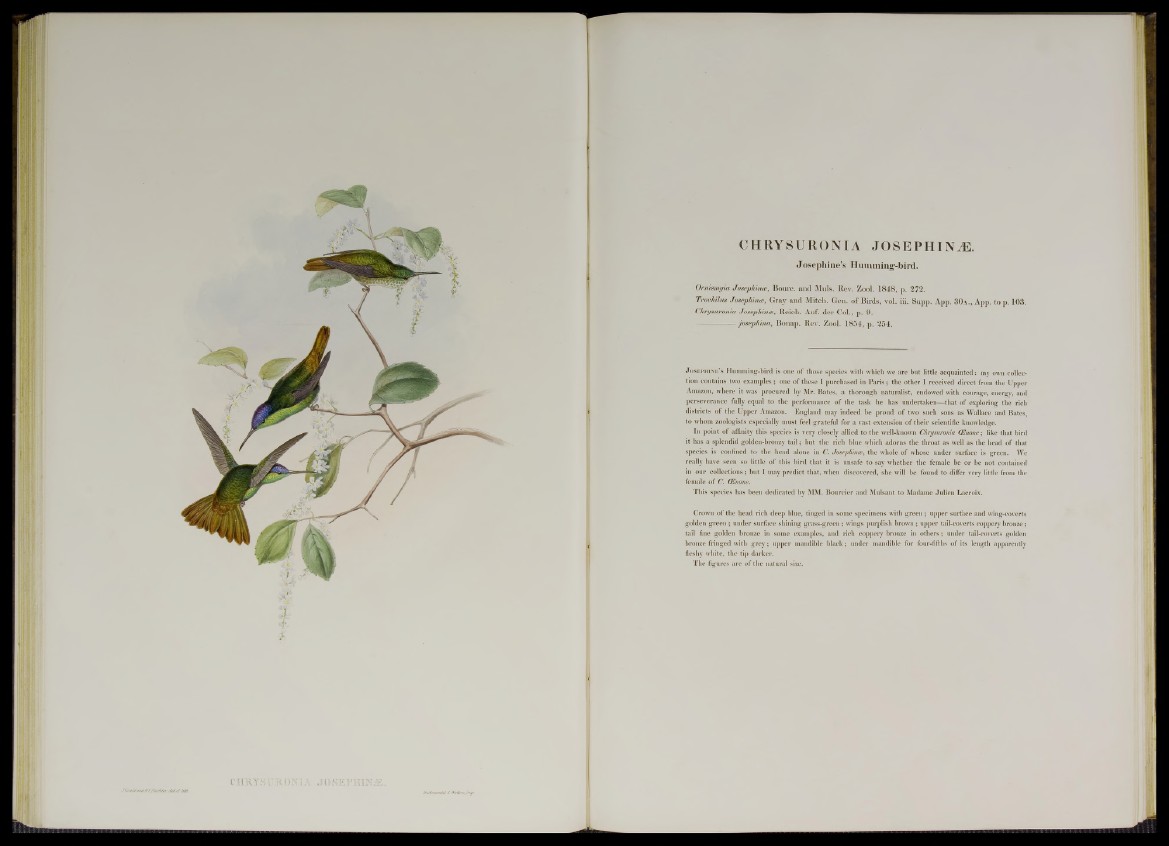
CHRYSURONIA JOSiJPHINiE.
CHRYSURONIA JOSEPHINJE.
Josephi ne’s H umming*-bird.
Ornisvnyia Josephina, Bourc. and Muls. Rev. Zool. 1848, p. 272.
Trochilm Josephina, Gray and Mitch. Gen. o f Birds, vol. iii. Supp. App. 3 0 a ., App. to p. 103.
Chrysuronia Josepliina, Reich. Auf. der Col., p. 9.
josephina, Bonap. Rev. Zool. 1854, p. 254.
J osephine’s Humming-bird is one of those species with which we are but little acquainted: my own collection
contains two examples; one of these I purchased in Paris; the other I received direct from the Upper
Amazon, where it was procured by Mr. Bates, a thorough naturalist, endowed with courage, energy, and
perseverance fully equal to the performance of the task he has undertaken—that of exploring the rich
districts of the Upper Amazon. England may indeed be proud of two such sons as Wallace and Bates,
to whom zoologists especially must feel grateful for a vast extension of their scientific knowledge.
In point of affinity this species is very closely allied to the well-known Chrysuronia (Enone; like that bird
it has a splendid golden-bronzy tail; but the rich blue which adorns the throat as well as the head of that
species is confined to the head alone in C. Josephina, the whole of whose under surface is green. We
really have seen so little of this bird that it is unsafe to say whether the female be or be not contained
in our collections; but I may predict that, when discovered, she will be found to differ very little from the
female of C. (Enone.
This species has been dedicated by MM. Bourcier and Mulsant to Madame Julien Lacroix.
Crown of the head rich deep blue, tinged in some specimens with green; upper surface and wing-coverts
golden green ; under surface shining grass-green; wings purplish brown; upper tail-coverts coppery bronze;
tail fine golden bronze in some examples, and rich coppery bronze in others; under tail-coverts golden
bronze fringed with grey; upper mandible black; under mandible for four-fifths of its length apparently
fleshy white, the tip darker.
The figures are of the natural size.